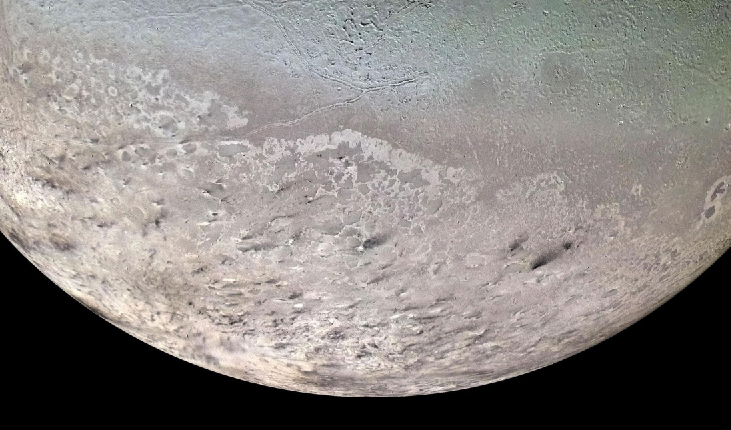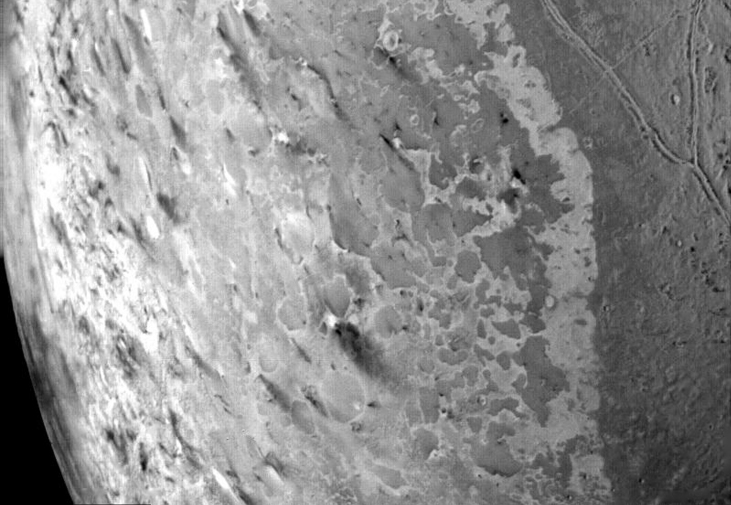| << Chapter < Page | Chapter >> Page > |
These discoveries raise the question of whether there could be life on Titan. Hydrocarbons are fundamental for the formation of the large carbon molecules that are essential to life on our planet. However, the temperature on Titan is far too low for liquid water or for many of the chemical processes that are essential to life as we know it. There remains, though, an intriguing possibility that Titan might have developed a different form of low-temperature carbon-based life that could operate with liquid hydrocarbons playing the role of water. The discovery of such “life as we don’t know it” could be even more exciting than finding life like ours on Mars. If such a truly alien life is present on Titan, its existence would greatly expand our understanding of the nature of life and of habitable environments.
The Cassini mission scientists and the visual presentation specialists at NASA’s Jet Propulsion Laboratory have put together some nice films from the images taken by Cassini and Huygens. See, for example, the Titan approach and the flyover of the Northern lakes district.
Neptune ’s largest moon Triton (don’t get its name confused with Titan) has a diameter of 2720 kilometers and a density of 2.1 g/cm 3 , indicating that it’s probably composed of about 75% rock mixed with 25% water ice. Measurements indicate that Triton’s surface has the coldest temperature of any of the worlds our robot representatives have visited. Because its reflectivity is so high (about 80%), Triton reflects most of the solar energy that falls on it, resulting in a surface temperature between 35 and 40 K.
The surface material of Triton is made of frozen water, nitrogen, methane, and carbon monoxide. Methane and nitrogen exist as gas in most of the solar system, but they are frozen at Triton’s temperatures. Only a small quantity of nitrogen vapor persists to form an atmosphere. Although the surface pressure of this atmosphere is only 16 millionths of a bar, this is sufficient to support thin haze or cloud layers.
Triton’s surface , like that of many other moons in the outer solar system, reveals a long history of geological evolution ( [link] ). Although some impact craters are found, many regions have been flooded fairly recently by the local version of “lava” (perhaps water or water-ammonia mixtures). There are also mysterious regions of jumbled or mountainous terrain.

The Voyager flyby of Triton took place at a time when the moon’s southern pole was tipped toward the Sun, allowing this part of the surface to enjoy a period of relative warmth. (Remember that “warm” on Triton is still outrageously colder than anything we experience on Earth.) A polar cap covers much of Triton’s southern hemisphere, apparently evaporating along the northern edge. This polar cap may consist of frozen nitrogen that was deposited during the previous winter.
Remarkably, the Voyager images showed that the evaporation of Triton’s polar cap generates geysers or volcanic plumes of nitrogen gas (see [link] ). (Fountains of such gas rose about 10 kilometers high, visible in the thin atmosphere because dust from the surface rose with them and colored them dark.) These plumes differ from the volcanic plumes of Io in their composition and also in that they derive their energy from sunlight warming the surface rather than from internal heat.

Saturn’s moon Titan has an atmosphere that is thicker than that of Earth. There are lakes and rivers of liquid hydrocarbons, and evidence of a cycle of evaporation, condensation, and return to the surface that is similar to the water cycle on Earth (but with liquid methane and ethane). The Cassini-Huygens lander set down on Titan and showed a scene with boulders, made of water ice, frozen harder than rock. Neptune’s cold moon Triton has a very thin atmosphere and nitrogen gas geysers.

Notification Switch
Would you like to follow the 'Astronomy' conversation and receive update notifications?